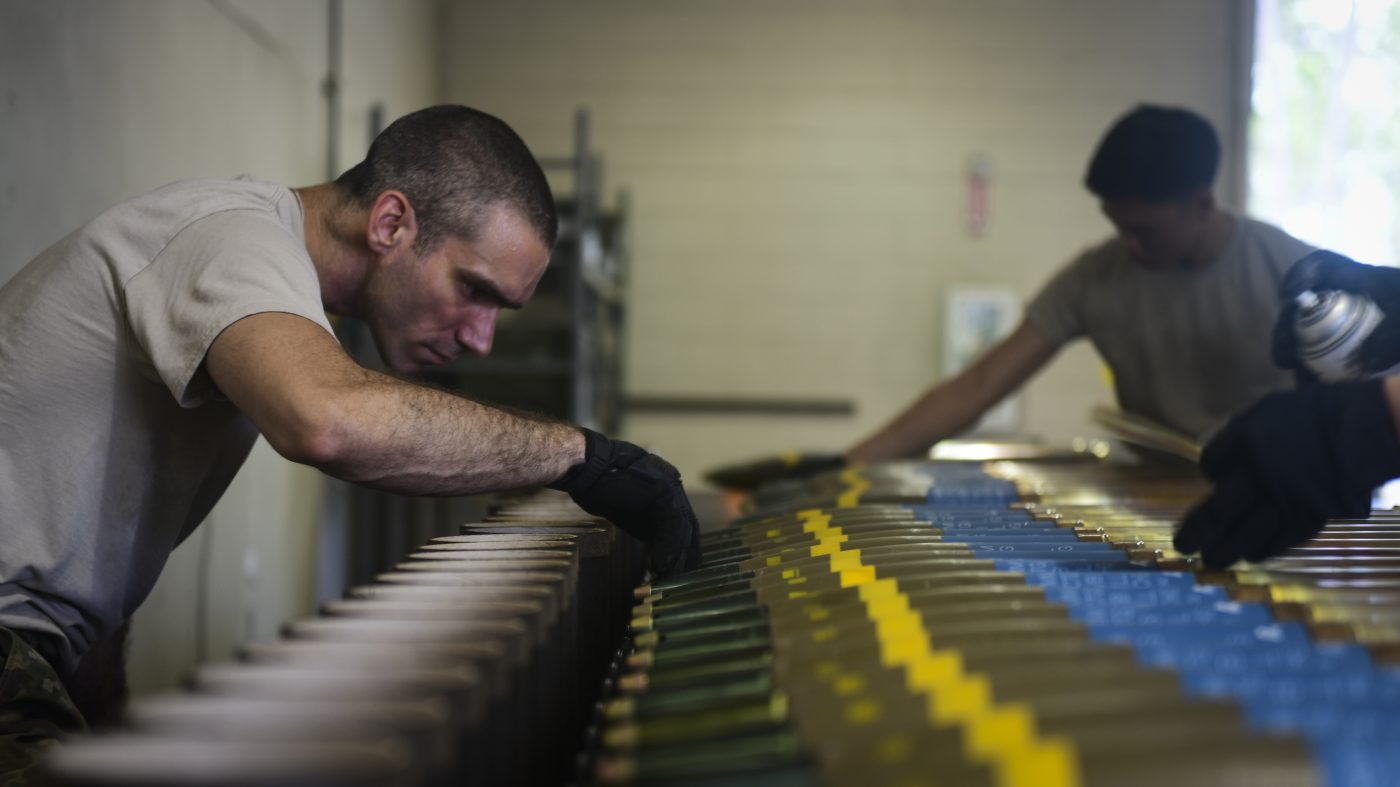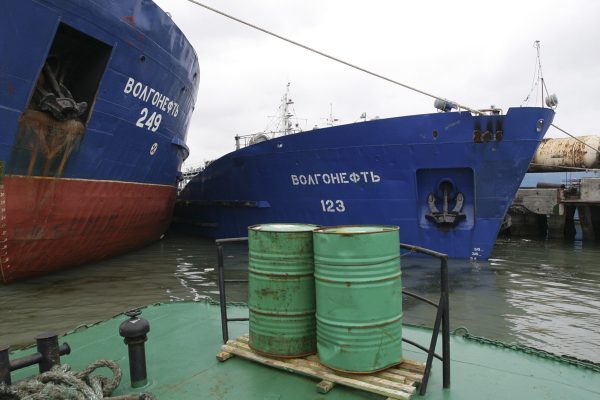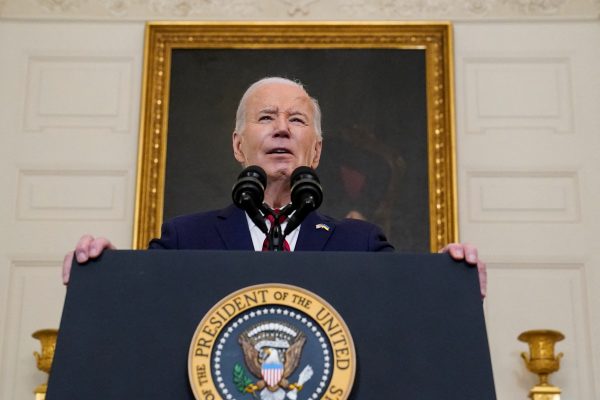Two years of all-out war in Ukraine, along with urgent needs in Taiwan and in other potentially threatened democracies, have laid bare the inadequacies of defense production on both sides of the Atlantic.
We still have a peacetime defense industry in an age of war and rising risk, although governments and Western organizations are at least recognizing the problem.
The US Department of Defense and the European Commission responded this year with their first-ever defense industry strategies, on 12 January and March 5 respectively.
Early commentary has focused on funding and implementation of these new industrial policies, which are certainly important. Strategically, however, success will depend on transatlantic cooperation, and that is easier said than done.
The US center of gravity is our alliances, and we should knit them together more tightly in everything we do, including defense industry strategies.
The US may still be the arsenal of democracy, in that it is the biggest defense producer, but it is not capable of outproducing both Russia and China as they rapidly ramp up defense spending — China raised outlays by 7.2% on March 5, the latest in a long series of increases, while Russia is rebuilding its defense industrial base and devotes one-third of government spending to defense. All of this is a sharp reminder that war among great powers is ultimately a test of the speed and scale of defense industrial capacity.
Truly resilient allied supply chains will require redundancies in the US and Europe. For Europeans nervous about the US commitment to NATO’s Article 5, buying US defense equipment binds the US closer, politically and militarily through true interoperability, training, and exercises.
Just look at Poland’s huge purchases of US equipment. It has also signed enormous arms contracts with the Republic of Korea because that country delivers quickly, a requirement in today’s wartime environment. It would be good for the US government and industry to examine exactly how the Koreans achieve this.
Neither the US nor the European Union (EU) strategy prioritizes transatlantic defense industry capabilities and how to leverage them so that the whole is greater than the sum of the parts. Both tilt towards protectionism, most explicitly in Europe’s proposed targets and incentives for member states to buy more from European industry, at the expense of American, non-EU, and UK equipment. (The head of Europe’s main missile company, MBDA, the UK-European joint venture, pleaded for a change of approach to include the British on March 13.)
Events have had some impact in this debate. France, the main proponent of an EU-only approach, has moderated its stance somewhat in recent weeks and has contributed to the Czech-led purchase of artillery shells from beyond the bloc.
It would be quite dangerous for the EU and the US to go their separate ways on defense industrial policy. This is not the Inflation Reduction Act (IRA) or the Chips Act, as important as they are to national security. The defense industry is at the heart of national security, deterrence, and capability for our warfighters. If new strategies contribute to a reduction in the US role in European defense, expect more fragmentation among European countries when Putin ratchets up the threats (as he will.)
A more robust European defense industry is in all our interests. It may indeed be time for a more overtly geopolitical European Commission with a Commissioner for Defense, as EC President Ursula von der Leyen proposed at the Munich Security Conference in February. Whoever gets the job will need to work for the creation of a Commission role in defense industry and acquisition, traditionally a jealously guarded purview of national governments.
Most important will be for the EU to focus on financing growth in European defense industry capacity. The EU should, however, know its limits and defer to NATO and member states on the capabilities they need.
The US and EU should find ways to incentivize transatlantic defense industry cooperation, where possible, including on co-production. For its part, the US should do much more to enable co-production among close allies, seizing this moment of European attention to defense industry issues.
NATO was tormented by a failure to standardize during the Cold War and will be again if it gets off on the wrong foot this time.
The US should tell the industry the capabilities it prioritizes for co-production and commit to pre-approvals or fast-tracked technology transfer. Industry needs such a positive demand signal from State and the Department of Defense (DoD) to justify the investment. The government should also make it easier and quicker for European defense companies to invest in the US. Such investments should be eligible for any incentives designed for US companies.
For its part, the EU should make US and UK co-produced defense equipment eligible for EC financial incentives; its strategy currently allows that for Ukraine, but not for NATO allies. Key European governments such as Germany and Sweden need to update export control laws so that co-produced equipment can be exported to countries in need, even during wartime.
The EU should also consider flexibilities so that individual member states who believe American equipment is essential to their security can continue to buy it without disincentives, even as the bloc as a whole may direct more funding into European companies.
This is the moment to declare that the allied defense industry is transforming to wartime production, and that the issue must be at the top of the transatlantic agenda. NATO’s Washington summit in July provides an opportunity to do so.
NATO’s Defense Industrial Production Board can do the necessary groundwork beforehand, with concrete commitments to follow at the summit. Scratchy EU-NATO relations, as well as French calls for strategic autonomy, have been problems in the past. It could be smoother this time, given the shared strategic challenge and shared membership.
With Sweden and Finland’s entry into NATO, EU and NATO memberships now overwhelmingly overlap, with notable exceptions. European NATO members not in the EU are now the UK (remarkably overlooked in the EU strategy), Turkey, North Macedonia, Albania, and Montenegro. EU members not in NATO are now Austria, Cyprus, Ireland, and Malta. French President Macron’s evolution toward supporting more military capability for Ukraine should also help.
We start from a bad place. Russia is now estimated to be out-producing Western artillery ammunition production by a ratio of 3:1. Russian guns fire five shells for every one fired by our Ukrainian allies. Defense production capability is key to overall deterrence and to defeating Russia in Ukraine. Meanwhile, in Asia, the Taiwanese have been vocal about delivery delays of about $22bn of defense equipment. It’s urgent because supplying an island in wartime is far harder than supplying Ukraine via Poland.
With a military standoff in Ukraine likely in the coming months, whichever country can field more capability for spring offensives in 2025 will likely prevail. Will the West really allow Russia, with an economy the size of Italy’s, to outproduce NATO and the EU?
We have in the past and must again use the tremendous capability of the allied armaments industry to deter and defeat our adversaries.
It now needs to become the central feature of EU and US defense industry strategy. Showing Russia that together, NATO and the EU can outproduce it, over the long term, with higher-end capabilities, would make long wars a much less appealing strategy to our adversaries.
In fact, outproducing should be a key part of our strategy against both Russia and China, neither of whose economies and technological base could keep up with the combined resources and capabilities of the West and its Asian allies.
Ambassador Paul Jones (ret.) is a Distinguished Fellow at the Center for European Policy Analysis (CEPA) and an International Affairs Advisor at Squire Patton Boggs global law firm. He was US Ambassador to Poland (2015-18), US Ambassador to Malaysia (2010-13), and Principal Deputy Assistant Secretary of State in the Bureau of European and Eurasian Affairs (2013-15). He was also Vice President for International Government Relations at Raytheon Technologies (2020-23).
Europe’s Edge is CEPA’s online journal covering critical topics on the foreign policy docket across Europe and North America. All opinions are those of the author and do not necessarily represent the position or views of the institutions they represent or the Center for European Policy Analysis.





